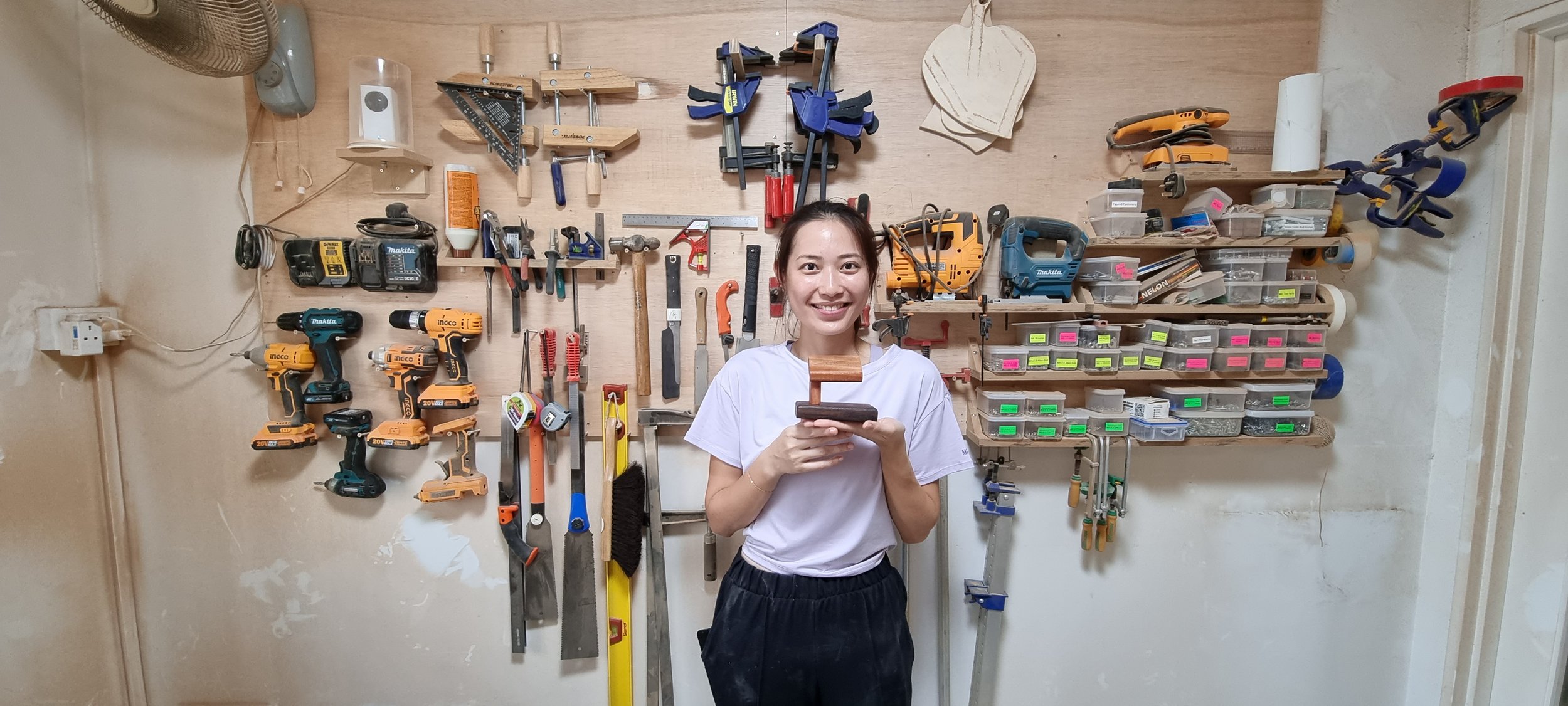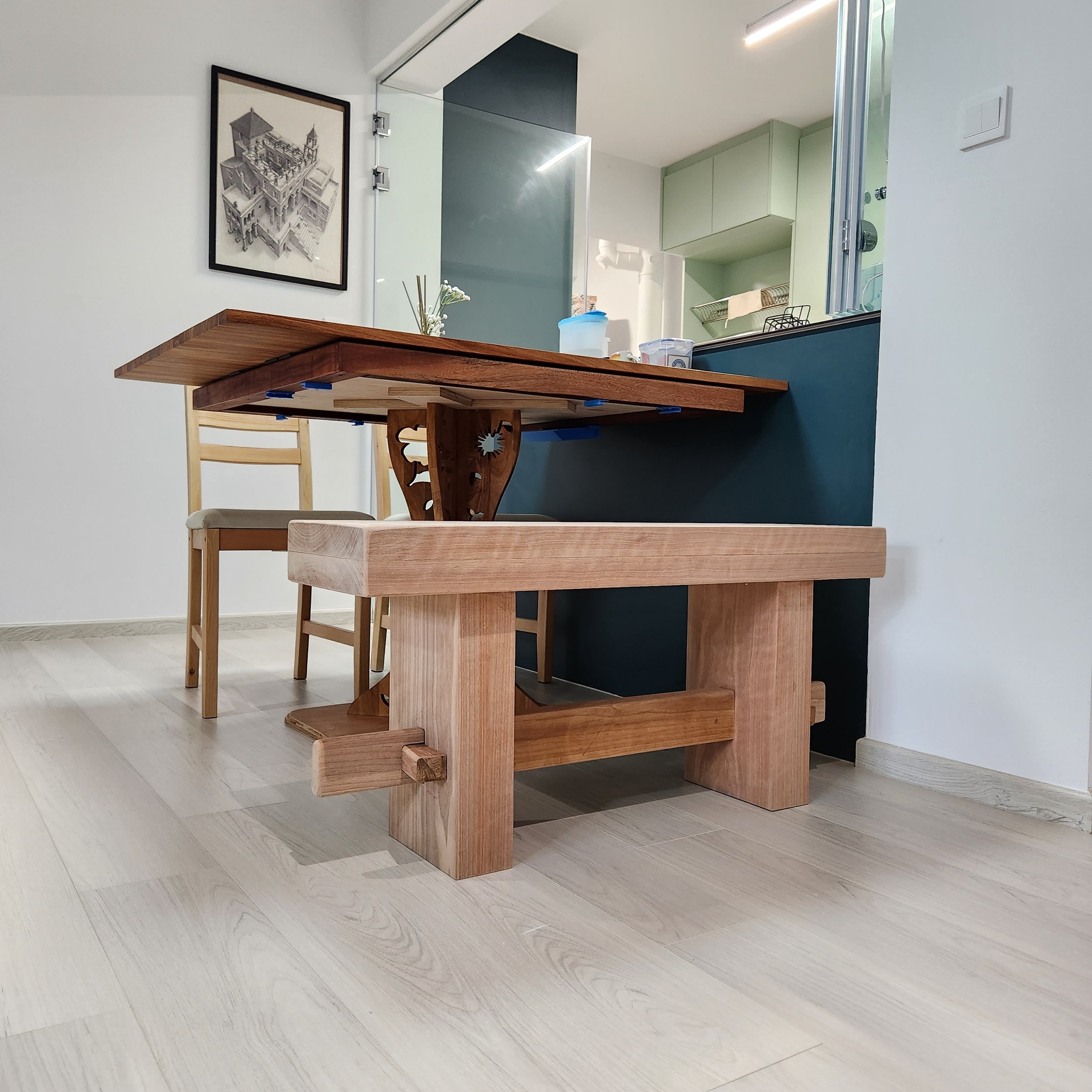What Is The Difference Between Carpentry And Woodworking
Carpentry and woodworking are two terms that are often used interchangeably. However, while there are similarities between the two disciplines, they are different in many ways. In this article, we will explore the differences between carpentry and woodworking, especially in how these terms are used in Singapore.
Understanding Carpentry and Woodworking
Wood has been an important material for construction and decoration for thousands of years. From the wooden temples of Japan to the intricate carvings of ancient Egypt, wood has been used to create beautiful and functional structures all over the world. Carpentry and woodworking are both important skills that have been passed down through generations of craftsmen.
Defining Carpentry
In the Singapore context, carpentry often refers to the use of wood to construct “built-in” furniture, most commonly in areas such as the kitchen and the living room. Carpentry is more than just cutting and nailing wood together. The most commonly used material for carpenters is the plywood, where they read and interpret blueprints and schematics to help them create structures or furniture. Carpenters must be skilled at measuring and cutting wood precisely, and must be able to work quickly and efficiently to keep up with the demands of a construction site.
Carpenters work on a variety of larger-scale projects, from building houses and commercial buildings to creating custom “built-in” furniture and cabinets, which are fixed into the structure or the walls of the building. They also must be able to work with a wide range of materials, including wood, metal, and plastic.
Defining Woodworking
Woodworking is a more specialized form of carpentry that focuses on creating objects out of wood. Woodworkers must have a deep understanding of the properties of different types of wood, as well as the ability to design and create complex pieces of furniture and other decorative objects, typically at a smaller scale than carpenters.
Woodworking is not limited to creating furniture and decorative objects. Woodworkers also create musical instruments, toys, and even boats. They must be able to work with a wide range of materials, including rare and exotic woods.
Both carpentry and woodworking are important skills that require years of practice and dedication to master. Whether building a house or creating a custom piece of furniture, carpenters and woodworkers play an important role in shaping the world around us.
Key Differences Between Carpentry and Woodworking
Woodworking and carpentry are two fields that are often confused with each other. While they share some similarities, there are also significant differences between the two. In this article, we will explore these differences in detail.
Scope of Work
Carpenters are primarily involved in construction projects. They work on roofs, walls, and floors, and install doors, windows, and cabinets. Their work involves measuring and cutting materials, reading blueprints, and using power tools. Carpenters are also responsible for ensuring that the structures they build are safe and meet the required standards.
Woodworkers, on the other hand, create a wide range of objects. They can make small items like jewelry boxes, or large pieces of furniture like tables and chairs. Woodworkers also create musical instruments, artwork, and other decorative items. Their work involves a deep understanding of wood and its properties, as well as the ability to shape and join it in various ways.
Required Skills and Techniques
Carpentry requires a broad range of skills. Carpenters must be able to read blueprints, use power tools, and measure and cut materials accurately. They also need physical strength and stamina, as carpentry work can be physically demanding. Carpenters must be able to stand, bend, and lift heavy materials for extended periods of time.
Woodworking, on the other hand, requires a different set of skills. Woodworkers must be skilled in cutting, shaping, and joining wood. They also need to be able to visualize the final product and work with precision to achieve it. Woodworkers often use hand tools like chisels, hand saws, and routers, as well as power tools like table saws, jointers, and sanders.
Tools and Equipment
Carpenters use a wide range of tools, including hammers, saws, drills, and power tools such as nail guns and circular saws. They also use measuring tools like levels, squares, and rulers to ensure that their work is accurate. Carpenters rely on power tools more heavily than woodworkers do.
Woodworkers, on the other hand, use a variety of tools and equipment. They use hand tools like chisels, hand saws, and planes to shape and carve wood. They also use power tools like table saws, jointers, and sanders to speed up the process. Woodworkers often have a deep understanding of their tools and equipment and may even make their own tools.
One key difference in tool choice is in the convenience between use on different worksites vs a regular studio workshop. A 2nd key difference is in the level of detail in the cutting or assembly. A carpenter can get away with rough work in the back so long as the front is finished cleanly, whereas a woodworker has to be more precise in all areas of work as the project is often small and handled more often.
Types of Projects
Carpenters work on a variety of construction projects, including building houses, commercial buildings, bridges, highways, and other infrastructure projects. They are responsible for ensuring that the structures they build are safe and meet the required standards.
Woodworkers, on the other hand, create a wide range of objects. They can make furniture, musical instruments, and artwork. Some woodworkers work in their own studios or workshops, while others are employed by furniture manufacturers or other companies. Woodworkers have the freedom to create unique and one-of-a-kind pieces that reflect their creativity and skill.
In conclusion, while carpentry and woodworking share some similarities, they are two distinct fields that require different skills, techniques, and tools. Both fields offer rewarding careers for those who enjoy working with wood and creating things with their hands.
The Overlap Between Carpentry and Woodworking
After reading the above, carpentry and woodworking may seem like two separate fields. However, there is actually some overlap between the two. In this article, we'll explore the shared skills, techniques, tools, and even collaboration opportunities between carpentry and woodworking.
Shared Skills and Techniques
Although carpentry and woodworking are different disciplines, there is some overlap between the two. Both carpenters and woodworkers work with wood, so they need to have a good understanding of the properties of wood. This includes knowing how to choose the right type of wood for a project, how to cut and shape it, and how to join pieces together to create a strong and durable structure.
Both disciplines require a high degree of precision and attention to detail to create beautiful, functional objects. Carpenters and woodworkers need to be able to measure accurately and make precise cuts to ensure that their work is both functional and aesthetically pleasing.
Another shared skill between carpentry and woodworking is the ability to read and interpret blueprints and plans. Whether it's a blueprint for a house or a set of plans for a custom piece of furniture, both carpenters and woodworkers need to be able to understand the design and execute it with precision.
Common Tools and Equipment
While the tools that carpenters and woodworkers use are different, there are some commonalities as well. Both disciplines require the use of saws, chisels, and other cutting tools. These tools are used to shape and form the wood into the desired shape and size.
Both carpenters and woodworkers rely on measuring tools like rulers and levels to ensure that their work is accurate. In addition, both disciplines use clamps and vises to hold pieces of wood in place while they work on them.
Another common tool between carpentry and woodworking is the router. This versatile tool can be used for a variety of tasks, including cutting grooves, shaping edges, and creating decorative details.
Collaboration on Projects
Carpenters and woodworkers sometimes collaborate on projects. For example, a carpenter may build a house, and a woodworker may create custom trim and cabinetry for the finished product. Collaboration between carpenters and woodworkers can result in unique, beautiful projects that meet the needs of clients.
Working together also allows carpenters and woodworkers to share their knowledge and expertise. Carpenters may have a better understanding of structural design and building codes, while woodworkers may have more experience with intricate joinery and decorative details.
In conclusion, while carpentry and woodworking are two distinct disciplines, there is some overlap between the two. Both require a deep understanding of wood and its properties, as well as precision and attention to detail. By working together, carpenters and woodworkers can create beautiful, functional projects that showcase their unique skills and expertise.
Choosing the Right Service for You
Choosing the right type of service can be a daunting task. It requires careful consideration of your needs and requirements. If you're interested in incorporating wood into your space, you'll need to decide whether carpentry or woodworking is the right path for you.
Assessing Your Scope of Your Project
Before making a decision, take some time to assess the scope of your project. Is it a large-scale project or is it fixed into the building structure? Or is it something that is loose and can be moved easily after fabrication? If it’s the former, you might consider hiring a carpenter for your work. If it’s the latter, a woodworker might be a better fit.
By answering these questions, you can begin to narrow down your options and choose someone that aligns with your needs and requirements.
Career Prospects in Carpentry and Woodworking
If you’re reaching this to research career prospects, here’s some good news. Carpentry and woodworking are both growing fields, with job opportunities available in a range of settings. Carpenters can expect to find work in the construction industry, building everything from houses to commercial buildings. They may also work on remodeling projects or specialize in creating custom cabinets and furniture.
Woodworkers may find opportunities in furniture design and manufacturing, creating everything from simple chairs to elaborate sculptures. They may also work in the arts and crafts industry, creating unique and one-of-a-kind pieces.
Both carpentry and woodworking require a high level of skill and attention to detail. Those who excel in these fields can expect to have rewarding careers with opportunities for growth and advancement.
Conclusion
While carpentry and woodworking are similar in some respects, they are different in many ways. Understanding the differences between these two disciplines can help you choose the path that is right for you, whether you want to work with wood on construction sites or in a workshop creating beautiful objects.






